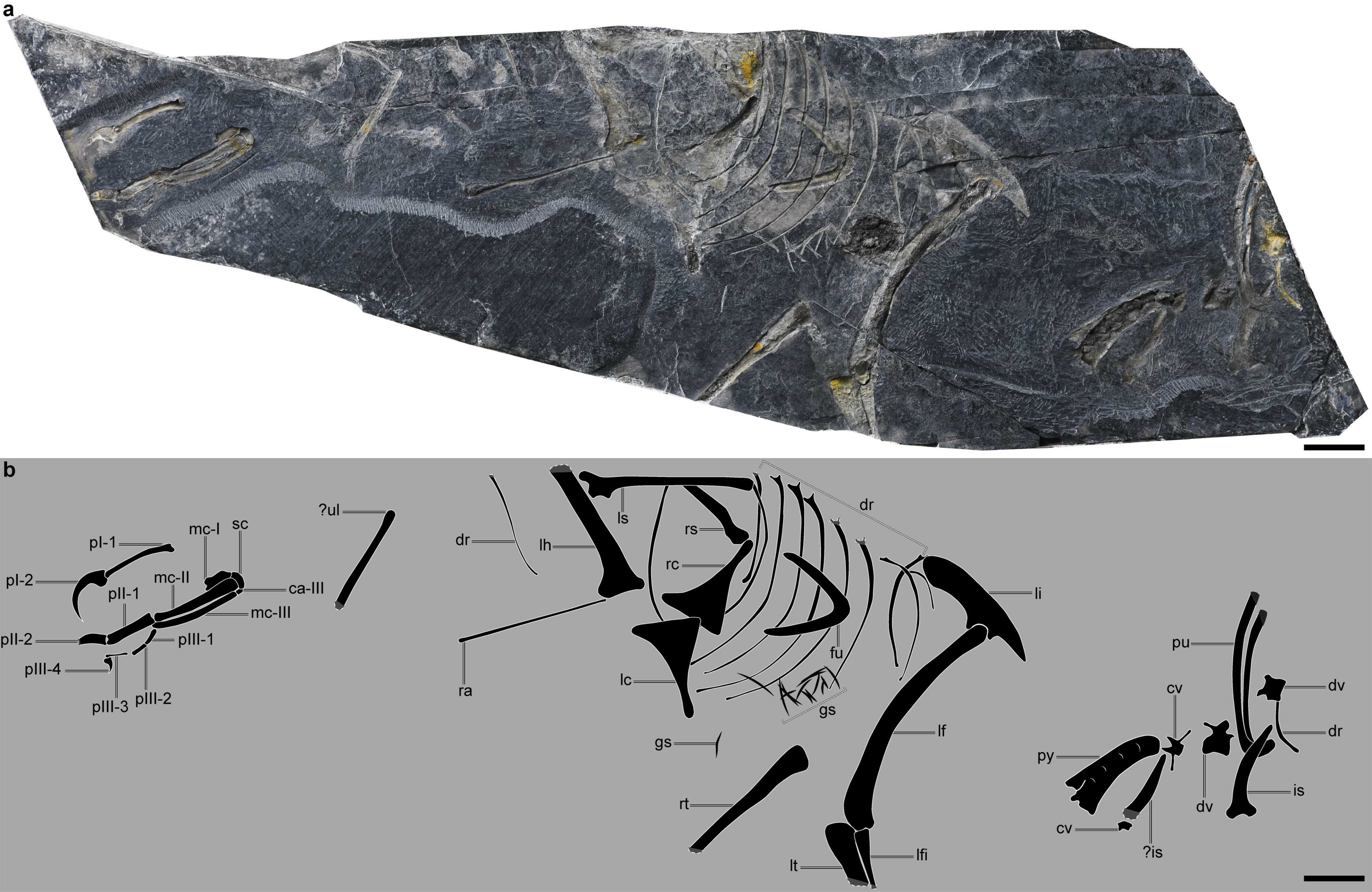Two fossils suggest that birds were thriving and diversifying in China as the Jurassic Period closed, new research reveals. Given the contentiousness of avian origins, however, the debate may have a fair way to run.
ADVERTISEMENT GO AD FREE
Early bird evolution is shrouded in mystery partly because their thin bones fossilize badly, but also because there’s room for debate about what exactly is a bird. When the first Archaeopteryx fossils were discovered, shortly after the publication of Darwin’s most famous work, an amazed world hailed them as the transition point between reptiles and birds. However, many paleontologists now consider them a sister-species of the first true birds, particularly because their long tails were so reptilian.
Contenders for the true first birds have now been found in Chinese rocks dating from the late Jurassic, around 149 million years ago. If accepted as birds, as the scientists who described them think they are, this would settle the question of whether birds existed prior to the Cretaceous.
Evolution is a gradual process, and it can be in the eye of the beholder when a species has made the jump to fit into a category humans have made. We have little trouble telling modern birds and reptiles apart, but avian ancestors had intermediary characteristics.
One of the newly described species, named Baminornis zhenghensis, has bird-like shoulders, pelvic girdle, and tail. However, it retains a hand structure similar to that of other dinosaurs.

The rock containing the only known Baminornis zhenghensis specimen (a) and the surviving bones reconstructed into their location in the animal
Image Credit: WANG Min
“Previously, the oldest record of short-tailed birds is from the Early Cretaceous. Baminornis zhenghensis is the sole Jurassic and the oldest short-tailed bird yet discovered, pushing back the appearance of this derived bird feature by nearly 20 million years,” said author Professor WANG Min of the Institute of Vertebrate Paleontology and Paleoanthropology, Chinese Academy of Sciences, in a statement.
It’s not just tail length that matters, but how they end. Modern birds’ tails finish with several vertebrae fused into a bone known as a pygostyle, and that of Baminornis zhenghensis was the same. The survival of reptilian tails in some later, otherwise bird-like species leads the authors to refer to the record on this feature as “chaos”, with confusion reigning as to whether modern bird tails evolved more than once.
ADVERTISEMENT GO AD FREE
The authors do not dethrone Archaeopteryx from its historical significance, however. Baminornis zhenghensis inherited some of its avian characteristics from Archaeopteryx, or a close cousin. These features, particularly powered flight, were essential to allowing the formation of this line that outnumbers mammals even today.
Nevertheless, co-author Dr ZHOU Zhonghe emphasized the new discovery’s importance, saying; “If we take a step back, and reconsider the phylogenetic uncertainty of Archaeopteryx, we do not doubt that Baminornis zhenghensis is the true Jurassic bird.”
Besides the subjective question of how birdlike a species must be to be considered a bird, the debate also has an element of national pride. With Archaeopteryx being from southern Germany, but most early avians being from China, debate often breaks down on national lines.
ADVERTISEMENT GO AD FREE
Pioneers of new animal families or orders are usually small, and Baminornis zhenghensis was no exception, weighing a dove-like 140-300 grams (5-11 ounces).
The second fossil described by the same team is so incomplete the authors opted not to give its species a name, but say it shows Cretaceous-style wishbones (furculas) were already present during the Jurassic.
The findings follow last week’s announcement of evidence that, near the end of the Cretaceous Period, the species Vegavis iaii had evolved sufficiently to be considered modern birds, specifically waterfowl. Even if Baminornis zhenghensis and the unnamed wishbone-bearer are accepted as true birds, no one would consider them modern or place them within a surviving avian order.
The study is published in the journal Nature.
Source Link: Two Jurassic Fossils Could Be The Earliest True Birds Ever Found